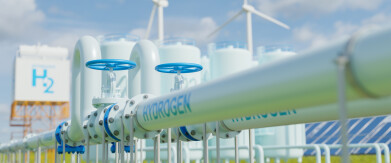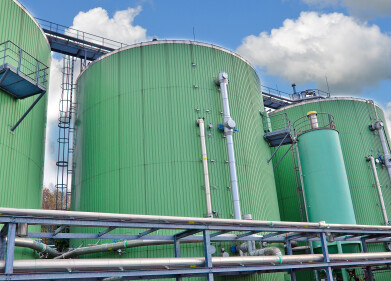Fuel for thought
Synthesising green hydrogen from sun and water
Jan 20 2025
Scientists in Japan have made significant progress in the development of a novel method for producing hydrogen fuel by harnessing sunlight and water, a breakthrough that could have transformative implications for renewable energy. This innovation centers around the use of photocatalytic sheets in a reactor system, which splits water molecules into hydrogen and oxygen. The resulting hydrogen fuel is a clean and emission-free energy source that could play a pivotal role in reducing global reliance on fossil fuels and mitigating climate change.
At the heart of the process is a 100-square-meter reactor equipped with photocatalytic sheets. These sheets are designed to perform water-splitting reactions when exposed to sunlight, effectively using the sun's energy to break water molecules into their constituent elements. The oxygen is released as a byproduct, while the hydrogen is collected and stored for use as fuel. Unlike many traditional methods of hydrogen production that rely on natural gas and emit substantial amounts of carbon dioxide, this technique leverages sunlight—a freely available and renewable energy source—making it a far more sustainable alternative.
The Japanese researchers employed a two-step photocatalytic process, which marks a significant improvement over the one-step systems traditionally used in similar experiments. This two-step process enhances the system's ability to capture and utilize sunlight efficiently, a critical factor given the challenges associated with solar-to-chemical energy conversion. Early tests have shown that the reactor performs better under natural sunlight than under ultraviolet light used in controlled laboratory conditions. This is largely due to the broader spectral range of sunlight, which provides a more diverse energy source for the photocatalysts.
Despite these advances, the system's overall efficiency remains a significant hurdle. Current solar-to-chemical conversion rates are less than 5%, which is far below the levels required for commercial viability. By comparison, most commercial solar panels achieve conversion efficiencies of 15-20%. To make this technology practical on a global scale, researchers will need to develop more efficient photocatalyst materials and optimize the reactor's design to maximize energy capture and minimize losses.
One of the unique challenges posed by this system is the safe handling of its byproducts, particularly oxyhydrogen gas—a highly flammable mixture of hydrogen and oxygen. While the researchers have taken initial steps to address safety concerns, further advancements will be necessary to ensure that large-scale implementations of this technology are safe and reliable. These measures may include designing systems to separate and store the gases more effectively or developing fail-safe mechanisms to prevent accidental ignition.
If these obstacles can be overcome, the implications of this technology could be far-reaching. Hydrogen fuel, produced sustainably and at scale, has the potential to revolutionize the energy sector. Unlike fossil fuels, hydrogen combustion emits only water vapor, making it an ideal candidate for applications ranging from powering vehicles to generating electricity for homes and industries. Moreover, hydrogen can be stored and transported relatively easily, which addresses some of the intermittency issues associated with solar and wind energy. It can also serve as a critical component of decarbonizing hard-to-electrify sectors, such as aviation, shipping, and heavy industry.
The success of this technology will depend on more than just scientific and technical advancements. Infrastructure development, regulatory frameworks, and market dynamics will also play crucial roles in determining whether hydrogen can emerge as a mainstream energy source. For instance, building a robust supply chain for hydrogen production, storage, and distribution will require significant investment and coordination among governments, private companies, and research institutions. Policymakers will need to implement supportive measures, such as subsidies, tax incentives, and standards for hydrogen production and use, to accelerate the adoption of this technology.
The researchers' achievement underscores the importance of interdisciplinary collaboration in addressing the complex challenges of energy transition. Advances in materials science, engineering, and chemistry will be needed to refine the photocatalyst materials and improve the reactor's design. At the same time, researchers and policymakers must work together to address economic and social considerations, such as cost-effectiveness, public acceptance, and equitable access to hydrogen fuel.
In the long term, this innovation could help reshape global energy systems by providing a renewable and sustainable alternative to fossil fuels. By tapping into the vast and untapped potential of sunlight and water, this technology offers a pathway toward a carbon-neutral future. While significant challenges remain, the progress made by these Japanese scientists represents a critical step forward in the quest for sustainable energy solutions. With continued investment in research and development, hydrogen fuel produced through sunlight and water could become a cornerstone of global efforts to combat climate change and build a more sustainable future.
Digital Edition
PIN 25.6 Buyers' Guide
January 2025
Buyers' Guide Directory - Product Listings by Category - Suppliers Listings (A-Z) Articles Analytical Instrumentation - ASTM D7042: The Quantum Leap in Viscosity Testing Technology -...
View all digital editions
Events
Jan 25 2025 San Diego, CA, USA
SPE Hydraulic Fracturing Technology Conference and Exhibition
Feb 04 2025 The Woodlands, TX, USA
Feb 05 2025 Guangzhou, China
Trinidad and Tobago Energy Conference 2025
Feb 10 2025 Point Lisas, Trinidad
Feb 10 2025 Lagos, Nigeria



















